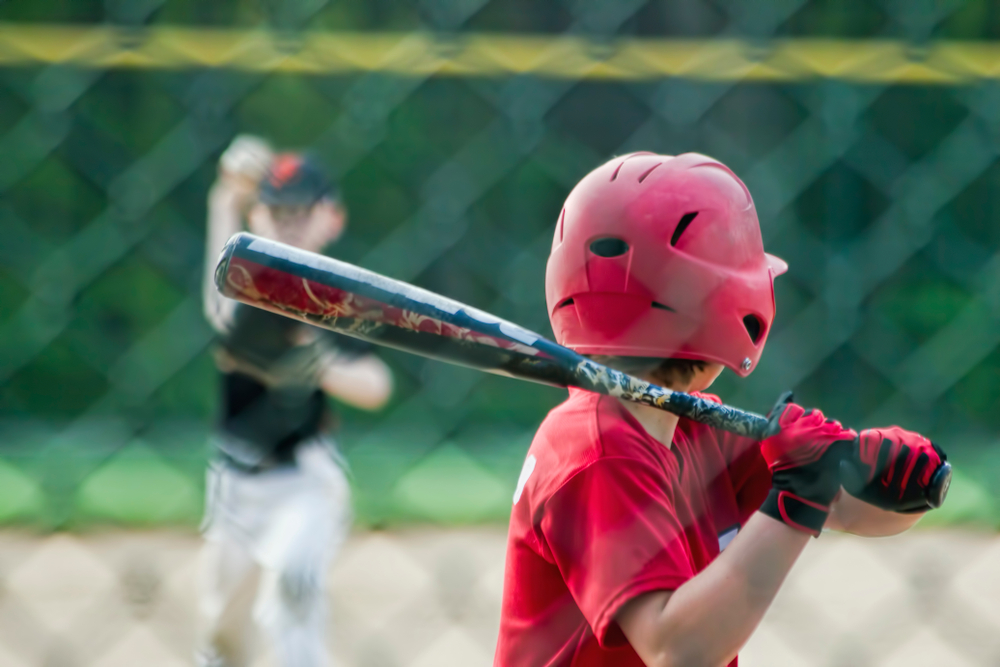As a youth baseball coach, your role is pivotal in developing the next generation of star pitchers. Young players look up to you for guidance and instruction, and it’s your responsibility to lay a strong foundation for their pitching careers. This blog is your comprehensive guide to youth baseball pitching, covering everything from pitching mound distances and drills to rules, coaching advice, and much more. Let’s dive in and help you become the best pitching coach you can be!
Age-Appropriate Pitching Distances
To ensure young pitchers develop their skills safely and effectively, it’s crucial to consider age-appropriate mound distances.
Just as young golfers wouldn’t use adult-sized clubs and beginner soccer players wouldn’t play with adult-sized balls and goals, it’s essential that young pitchers train with the right-sized equipment and on appropriately sized fields. This ensures that they build a solid foundation of skills tailored to their age and physical development.
In almost every sport, training with equipment and fields proportional to a young player’s size accelerates their learning process and skill development.
Preventing injuries is a top concern in youth baseball, and pitching-related injuries can result from various factors. It’s crucial to understand that having younger pitchers throw from distances meant for adults can harm their pitching mechanics and potentially set the stage for injuries. Properly scaled training not only enhances skill development but also safeguards the health of young arms.
Guidelines for Pitching Mound Distances by Age Groups:
There are quite a few different guidelines for pitching distances. For our purposes, we’re going to use Little League’s pitching guidelines.
| Age | Distance |
| 9U-10U | 46 feet |
| 11U-13U | 58 feet, 6 inches |
| 12U-14U | 60 feet, 6 inches |
| 15U-18U | 60 feet and 6 inches |
Understanding and implementing these distances will help prevent young pitchers from straining their arms and enable them to build good pitching mechanics.
5 Essential Pitching Drills for Youth Players
We all know that practice makes perfect, so we’ve compiled 5 pitching drills that will help your pitcher take their game to the next level.
1. Balance and Posture Drill
- Purpose: This drill helps pitchers improve their balance and posture, which are crucial for consistent mechanics and accuracy.
- Setup: Pitchers stand on the mound with a catcher or target in place.
- Steps:
- The pitcher begins their normal wind-up.
- At the peak of the leg lift, they pause for a few seconds to focus on balance.
- The pitcher should maintain a straight posture, keeping the chest over the front knee.
- After the pause, continue with the pitching motion.
- Repeat this process several times to ingrain balance and posture.
2. Target Practice Drill
- Purpose: This drill enhances a pitcher’s accuracy and control by targeting specific spots in the strike zone.
- Setup: Set up a strike zone target, like a net or marked area, behind a catcher or pitching screen.
- Steps:
- The pitcher stands on the mound with a catcher or target in place.
- Have the pitcher throw with a specific target in mind, aiming for corners or specific areas within the strike zone.
- The catcher or coach provides feedback on whether the pitch hit the target.
- Continue this process, making adjustments to improve accuracy and consistency.
3. Changeup Grip and Arm Speed Drill
- Purpose: This drill helps pitchers work on their changeup pitch, focusing on grip and arm speed.
- Setup: Pitchers stand on the mound with a catcher or target.
- Steps:
- The pitcher starts with a regular fastball grip.
- Focus on arm speed and a consistent release point.
- The pitcher changes the grip to the changeup grip and continues the pitching motion.
- The catcher provides feedback on the speed and movement of the pitch.
- Repeat the drill to master the changeup pitch.
4. Four-Corner Target Drill
- Purpose: This drill improves a pitcher’s ability to hit different areas of the strike zone accurately.
- Setup: Place targets at the four corners of the strike zone (low and away, low and inside, high and away, high and inside).
- Steps:
- The pitcher stands on the mound with a catcher or target.
- Call out a target (e.g., low and away).
- The pitcher aims for that specific target, adjusting the pitch location accordingly.
- Repeat the drill with each of the four corners, ensuring the pitcher can hit different areas with precision.
5. Pitching Under Pressure Drill
- Purpose: This drill simulates high-pressure game situations, helping pitchers maintain composure and focus.
- Setup: Create a game-like scenario with bases, a batter, and fielders.
- Steps:
- The pitcher faces a live batter and an infield defense.
- Set up various game situations, such as full counts, two outs, or runners in scoring position.
- The pitcher must execute pitches under pressure while focusing on mechanics, accuracy, and strategy.
- Coaches and teammates provide feedback and evaluate the pitcher’s ability to handle pressure effectively.
These pitching drills cover various aspects of pitching, from balance and accuracy to developing specific pitches and performing under game pressure. Incorporating these drills into your coaching regimen will help young pitchers develop a well-rounded skill set.
Youth Pitching Rules and Regulations
To ensure the safety and development of young pitchers, it’s crucial to understand the youth baseball rules and regulations, which can vary between leagues. Some common rules to be aware of include:
Pitch Count and Innings Restrictions
Different age groups have specific pitch count limits per game. Understand the rules for “innings pitched” to avoid overuse of young arms.
Special Rules for Different Age Groups
Familiarize yourself with unique rules for younger age groups, like coach-pitch and tee-ball leagues. Stay informed about rule changes and updates from your league.
Strategies for Managing Pitchers within These Rules
Develop a pitching rotation strategy to ensure all pitchers get playing time.
Avoid violating pitch count limits, even in high-pressure situations.
Knowing and following these rules is not only essential for the safety of your players but also for maintaining a positive and fair playing environment.
How much is too much pitching?
Something every pitcher needs to be cautious of is over-exerting themselves. Pitch count limits exist to protect young arms and prevent overuse injuries. Overuse injuries can have long-term effects on a player’s career. Pitch count limits are designed to prevent such injuries and promote safety. This is especially true for youth pitchers. As a coach or parent, you want to pay attention to how much your player is pitching and make sure there are adequate rest periods. In order to help prevent pitching injuries, pitchers should try to stay within the following guidelines.
Recommended pitching counts by age
| Age | MaxPitches |
| 6-8 | 50 |
| 9-10 | 75 |
| 11-12 | 85 |
| 13-14 | 95 |
Familiarize yourself with the recommended pitch limits for different age groups.
Consider setting slightly lower limits to allow for extra caution. Assign someone to track pitches during games. Use pitch count apps or charts to make the process more straightforward.
By adhering to pitch count limits and monitoring pitches diligently, you can help keep young arms healthy and prolong their playing careers.
Pitching Rest Periods and Recovery
Rest and recovery are crucial for maintaining the health and performance of young pitchers. Rest allows young arms to recover and repair after pitching.
Inadequate rest can lead to arm fatigue and injury.
Recommended Rest Periods Between Pitching Appearances
We suggest following the guidelines below on how many days of rest are required based on the number of pitches thrown.
“Days of Rest” means how many days it’s been since they’ve last pitched in a game. For example, if a 15-year-old hasn’t pitched for 2 days, then he can throw up to 60 pitches.
| Days of Rest | 14 and Under | 15 and 16 |
| 0 | Max pitches: 1-20 | Max pitches: 1-30 |
| 1 | Max pitches: 21-35 | Max pitches: 31-45 |
| 2 | Max pitches: 36-65 | Max pitches: 46-60 |
| 3 | Max pitches: 51-65 | Max pitches: 61-75 |
| 4 | Max pitches: 66+ | Max pitches: 76+ |
Advice for Youth Pitching Coaches
Effective coaching goes beyond teaching physical skills; it also involves mentorship and guidance. Here’s some valuable advice for youth pitching coaches:
Building Trust and Rapport with Young Pitchers
Develop a strong coach-player relationship built on trust and respect. Make sure young players feel comfortable approaching you with questions or concerns.
Effective Communication and Feedback Techniques
Provide clear and constructive feedback. Use positive reinforcement to motivate and encourage your pitchers.
Developing Customized Training Plans
Recognize that each player is unique and tailor your coaching to their individual needs. Set specific goals and work with your pitchers to achieve them.
Handling the Mental Aspects of Pitching
Recognize the mental challenges young pitchers face. Teach them strategies to stay focused and confident on the mound. Supporting your players both on and off the field will help them develop not only as pitchers but also as individuals.
Show Your Team’s Mettle at Ballparks of America
Is your team ready to compete in a world-class stay-and-play tournament? Check out our schedule of tournaments for the summer of 2024, and contact us for more information.





